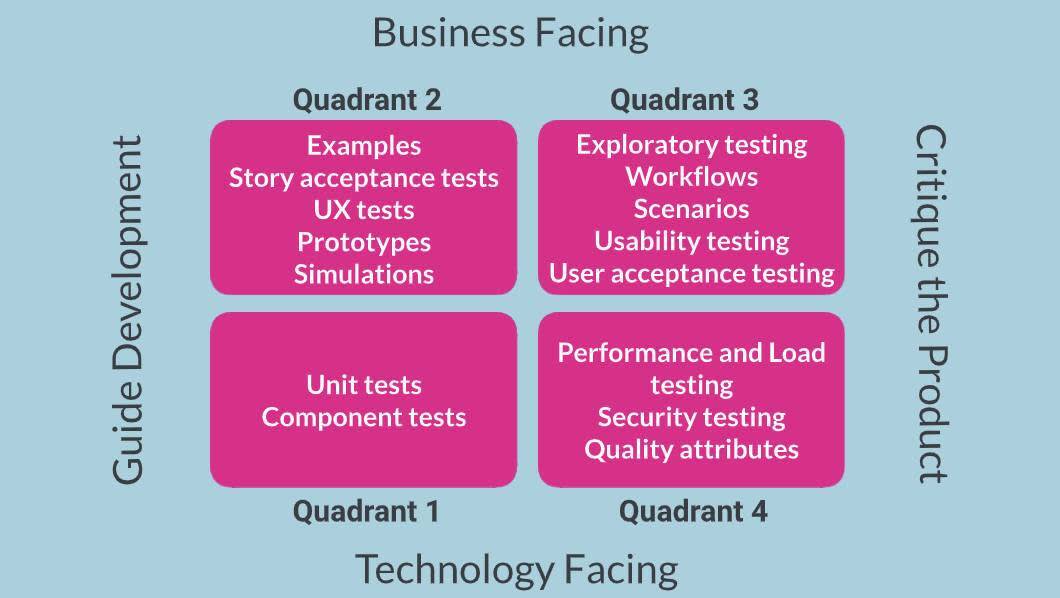Explore the Agile Testing Quadrants
Learning Objectives
After completing this unit, you’ll be able to:
- Explain the four agile testing quadrants.
- Describe the different types of testing within each quadrant.
What Are the Agile Testing Quadrants?
For the purposes of this module, we refer to the revised agile testing quadrants by Agile testing practitioner Lisa Crispin, when we discuss the testing types. The agile testing quadrants help organize the types of tests used in software development. Note, while these quadrants are numbered, they do not require to be followed in any particular order.

Attributions: Brian Marick and Lisa Crispin.
Remember, this framework helps your team think through the types of testing you need to complete. But your situation is unique and there may be overlap. Apply what you need and leave the rest!
Quadrant 1: Technology-Facing Tests That Guide Development
These tests are typically automated and are designed to test a small area of code. They provide quick feedback to the team, allowing for fast changes to be made to the code. Check them out below.
Quadrant 2: Business Facing Tests That Guide Development
Most software testing teams begin with these tests. They provide an important foundation for further testing. Click each type of test to learn more.
Quadrant 3: Business-Facing Tests That Critique the Product
These tests are human-centric and focus on the product itself, evaluating whether the stories and features of your software deliver value to the customer. Let's take a look at some examples of these tests.
Quadrant 4: Technology-Facing Tests That Critique the Product
This quadrant uses tools to create test data and set up scenarios for further testing. These tests are often automated. Check them out in this interactivity.
Sum It Up
In this module, you learned the difference between manual and automated testing. You also learned how the agile testing quadrants can help your team organize its tests and test your applications in a well-planned format. More organized testing leads to higher quality of your product, so keep it up!